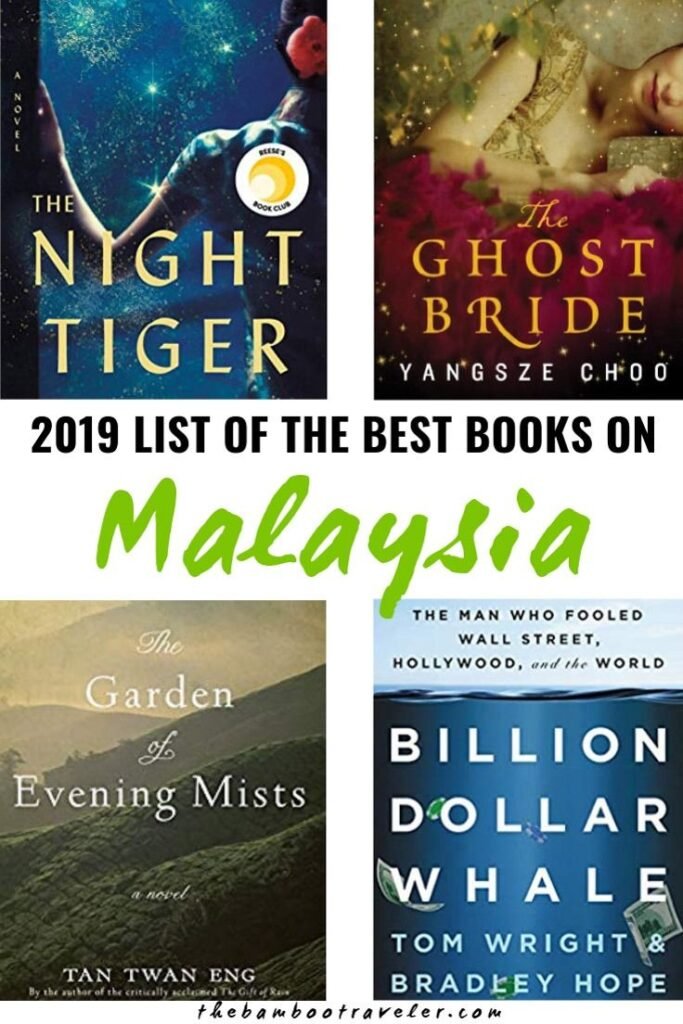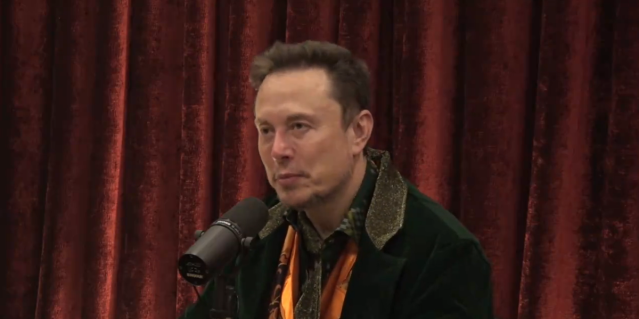“Sejarah Melayu” and “A History of Malaysia” are among the best books on Malaysian history. Both offer comprehensive insights into the country’s rich past.
Malaysian history is a fascinating tapestry of diverse cultures, colonial influences, and significant events. “Sejarah Melayu,” also known as the “Malay Annals,” chronicles the history of the Malay Sultanate and early Malay civilization. “A History of Malaysia” by Barbara Watson Andaya and Leonard Y.
Andaya provides a detailed account of Malaysia from prehistory to modern times. These books are essential for understanding Malaysia’s cultural evolution, colonial periods, and path to independence. Readers gain a deep appreciation for the nation’s heritage and the complex factors that have shaped contemporary Malaysia.
Introduction To Malaysian Literary Treasures
Malaysian history is a tapestry of cultures, traditions, and stories. Exploring this history through books can be both enlightening and enjoyable. From ancient kingdoms to modern times, each book offers a unique glimpse into Malaysia’s past.
The Diversity Of Malaysian History
Malaysia’s history is rich and diverse. It includes influences from Malay, Chinese, Indian, and indigenous cultures. Each group has contributed to the nation’s unique identity.
- Ancient Kingdoms: Early Malay kingdoms like Langkasuka and Srivijaya.
- Colonial Era: The Portuguese, Dutch, and British periods.
- Independence: The journey to becoming Malaysia in 1957.
These periods are well-documented in various books. They offer insights into Malaysia’s complex and fascinating history.
Why Read Books On Malaysian History?
Reading about Malaysian history is important. It helps us understand the country’s journey. Here are some reasons to dive into these literary treasures:
- Educational: Gain knowledge about historical events and figures.
- Cultural Understanding: Appreciate the diverse cultures that shape Malaysia.
- Inspiration: Learn from the resilience and achievements of past generations.
Books on Malaysian history are not just for historians. They are for anyone interested in the rich tapestry of Malaysia’s past. Grab a book and start your journey through time today!

Credit: www.aljazeera.com
Colonial Era Chronicles
The Colonial Era Chronicles of Malaysia offer a fascinating insight into the country’s past. These books provide a detailed look at the impact of British rule and the significant events of the Malayan Emergency. Whether you are a history enthusiast or a curious reader, these chronicles will captivate and inform you.
Impact Of British Rule On Malaysia
The British rule had a profound influence on Malaysia. They introduced new administrative systems and economic changes. The British built roads, railways, and ports, which helped in trade and movement. They also introduced English education, which changed the social fabric of Malaysia.
| Aspect | Impact |
|---|---|
| Infrastructure | Development of roads, railways, and ports. |
| Economy | Introduction of cash crops like rubber and tin mining. |
| Education | Establishment of English schools and colleges. |
Books like “The Making of Modern Malaysia” and “A History of Malaysia” delve deep into these changes. They highlight how British policies affected local communities and shaped modern Malaysia.
Stories From The Malayan Emergency
The Malayan Emergency (1948-1960) was a significant period in Malaysian history. It was a time of conflict between the Malayan Communist Party and British forces. This period witnessed guerrilla warfare, political strategies, and the struggle for independence.
- “The War of the Running Dogs” by Noel Barber: This book provides an in-depth look at the guerrilla warfare tactics used during the Emergency.
- “Red Star Over Malaya” by Cheah Boon Kheng: This book offers a detailed account of the Communist insurgency and its impact on the local population.
- “Emergency: A Personal Account” by General Sir Gerald Templer: A firsthand account from the British High Commissioner who played a crucial role in ending the Emergency.
These stories showcase the bravery and resilience of Malaysians. They also highlight the complex relationship between the colonizers and the local population during this turbulent period.
Pre-colonial Times And Ancient Kingdoms
Malaysia’s history is rich and diverse, with roots stretching back centuries. Understanding its past is key to appreciating its culture and heritage. Pre-colonial Malaysia was shaped by powerful kingdoms and vibrant trade routes.
Srivijaya And Malacca Sultanate Influences
The Srivijaya Empire dominated Southeast Asia from the 7th to the 13th century. Srivijaya’s influence extended to parts of Malaysia, making it a hub for trade and culture. The Malacca Sultanate rose to prominence in the 15th century. Malacca became a vital port, attracting traders from around the world.
| Kingdom | Time Period | Influence |
|---|---|---|
| Srivijaya | 7th – 13th Century | Trade, culture, Buddhism |
| Malacca Sultanate | 15th Century | Trade, Islam, maritime power |
The Role Of Trade And Islam In Shaping Malaysia
Trade played a crucial role in ancient Malaysia. The region’s strategic location made it a natural meeting point for traders. Goods from China, India, and the Arab world passed through Malaysia. This exchange brought wealth and cultural diversity.
Islam arrived in Malaysia in the 12th century. Traders from the Middle East and India introduced it. The spread of Islam changed the social and political landscape. It influenced local customs, law, and education.
- Trade routes connected Malaysia to global markets.
- Islam brought new religious practices and governance models.
- Ancient kingdoms thrived on trade and cultural exchange.
The Struggle For Independence
The story of Malaysia’s independence is inspiring. The journey involves brave leaders, strategic battles, and resilient citizens. Many books cover this vital period, shedding light on the country’s path to freedom.
Key Figures In The Fight Against Colonialism
Many heroes emerged during Malaysia’s fight against colonialism. These figures made significant sacrifices:
- Tunku Abdul Rahman: Known as the “Father of Independence,” he led negotiations for freedom.
- Dato’ Onn Jaafar: Founder of UMNO, he played a crucial role in uniting Malays.
- Chin Peng: Leader of the Malayan Communist Party, he fought against British forces.
Transition From Colonies To A Nation-state
The transition from colonies to a nation-state was complex. It involved negotiations, agreements, and significant changes:
| Year | Event |
|---|---|
| 1946 | Formation of the Malayan Union |
| 1948 | Establishment of the Federation of Malaya |
| 1957 | Independence from British rule |
The Federation of Malaya Agreement in 1948 was a turning point. It set the stage for independence in 1957. This period saw the unification of diverse groups into a single nation. The formation of Malaysia in 1963 marked the consolidation of this effort.
Economic Growth And Challenges
Understanding Malaysia’s economic growth and challenges is vital for history enthusiasts. Several books on Malaysian history provide deep insights into this topic. They cover the journey from post-independence policies to the implementation of the New Economic Policy.
Post-independence Economic Policies
Post-independence, Malaysia faced numerous economic challenges. The government focused on diversifying the economy. They aimed to reduce reliance on rubber and tin. Agriculture was expanded, and new industries were introduced.
The government invested in infrastructure. Roads, schools, and hospitals were built. This helped improve living standards. Education was a key priority. Schools and universities were established to create a skilled workforce.
Trade policies were liberalized. This attracted foreign investments. Malaysia became a hub for manufacturing and exports. The economy grew rapidly. Books on this period highlight the significance of these policies.
The New Economic Policy And Its Outcomes
The New Economic Policy (NEP) began in 1971. Its goal was to eradicate poverty and restructure society. The NEP aimed to reduce the economic disparity between ethnic groups.
The policy had two main objectives:
- Reducing poverty irrespective of race.
- Restructuring society to eliminate the identification of race with economic function.
Several initiatives were launched under NEP:
- Rural development programs.
- Educational opportunities for the Bumiputera community.
- Encouraging Bumiputera participation in commerce and industry.
These measures led to significant economic and social changes. The middle class expanded. Living standards improved for many Malaysians.
Books on Malaysian history discuss the successes and criticisms of the NEP. They provide a balanced view of the policy’s impact on the nation.
| Policy | Objective | Outcome |
|---|---|---|
| Post-independence policies | Diversify economy | Rapid growth |
| New Economic Policy | Reduce poverty and restructure society | Significant social changes |
Reading these books provides a comprehensive understanding of Malaysia’s economic journey. They highlight the nation’s efforts to balance growth with social equity.

Credit: www.britannica.com
Ethnic Diversity And Cultural Mosaic
Malaysia stands out with its diverse ethnic groups. This diversity is a blend of Malay, Chinese, Indian, and indigenous cultures. Each group adds unique traditions, languages, and customs. This mix creates a vibrant cultural tapestry. Books on Malaysian history often highlight this fascinating mosaic.
The Interweaving Of Malay, Chinese, And Indian Heritages
The Malay heritage forms the backbone of Malaysia. They are the largest ethnic group. Malay culture is rich with traditional music, dance, and festivals. The Chinese community is significant in Malaysia. They brought their own customs and traditions. Chinese New Year is a major celebration across the country.
The Indian community adds more colors to Malaysia. They introduced vibrant festivals like Deepavali. Indian cuisine, with its spices and flavors, is popular in Malaysia. Books on Malaysian history often explore these interwoven heritages.
Preservation Of Indigenous Cultures And Traditions
Malaysia is home to many indigenous groups. These include the Orang Asli in Peninsular Malaysia and the Dayak in Borneo. Each indigenous group has its own unique culture. They have traditional dances, songs, and rituals. Preserving these traditions is important for Malaysia’s cultural heritage.
Books on Malaysian history often document these indigenous cultures. They highlight the efforts to preserve these traditions. This includes initiatives to protect their languages and customs. Books also explore how these cultures interact with modern Malaysia.
| Ethnic Group | Notable Festivals | Cultural Contributions |
|---|---|---|
| Malay | Hari Raya Aidilfitri | Traditional music and dance |
| Chinese | Chinese New Year | Festivals and cuisine |
| Indian | Deepavali | Spices and vibrant celebrations |
- Malay: Largest ethnic group, rich traditions.
- Chinese: Significant community, major festivals.
- Indian: Adds vibrant colors, rich cuisine.
- Orang Asli: Indigenous group in Peninsular Malaysia.
- Dayak: Indigenous group in Borneo.
- Preservation: Efforts to protect languages and customs.
Malaysia In Modern Literature
Malaysia’s rich history comes alive in contemporary literature. Modern authors bring fresh perspectives. These works help readers explore Malaysia’s evolving cultural landscape.
Contemporary Authors And New Perspectives
Contemporary Malaysian authors offer fresh, insightful narratives. They reveal the country’s modern identity. These writers blend historical events with fiction, creating captivating stories.
- Tash Aw – His novels explore Malaysia’s social dynamics.
- Tan Twan Eng – He writes about Malaysia’s past and present.
- Rani Manicka – Her works delve into family and cultural heritage.
Exploring Modern Malaysia Through Fiction
Fictional works provide a window into Malaysia’s modern culture. They highlight societal changes and contemporary issues.
| Book Title | Author | Theme |
|---|---|---|
| The Garden of Evening Mists | Tan Twan Eng | Memory and War |
| The Harmony Silk Factory | Tash Aw | Identity and Betrayal |
| The Rice Mother | Rani Manicka | Family and Tradition |
These books are essential for understanding modern Malaysia. They offer deep insights into the nation’s evolving identity.
Personal Accounts And Biographies
Personal accounts and biographies offer a unique lens on Malaysian history. They present stories of leaders and ordinary people. These narratives provide a deeper understanding of Malaysia’s past. Through these books, readers connect with the nation’s rich heritage.
Memoirs Of Malaysia’s Leaders
Memoirs of Malaysia’s leaders reveal the nation’s political evolution. Tunku Abdul Rahman’s autobiography is a notable example. This book covers his role in Malaysia’s independence. It offers insights into his leadership and vision.
Mahathir Mohamad’s memoir, “A Doctor in the House,” is another essential read. It covers his time as Prime Minister. The book discusses his policies and challenges. It gives readers a look into his personal thoughts and decisions.
Everyday Stories Of Malaysian Life
Biographies of ordinary Malaysians tell everyday stories. These books highlight the diverse cultures within Malaysia. They showcase the daily lives of various communities. Readers learn about traditions, struggles, and joys.
One such book is “Growing Up in Trengganu” by Awang Goneng. This book paints a vivid picture of life in a Malaysian village. It shares tales of childhood and local customs. The author’s detailed descriptions bring the past to life.
“Kampung Boy” by Lat is a beloved graphic novel. It illustrates the author’s childhood in a rural village. The book is both humorous and educational. It captures the essence of village life with charming illustrations.
| Book Title | Author | Focus |
|---|---|---|
| A Doctor in the House | Mahathir Mohamad | Political Memoir |
| Growing Up in Trengganu | Awang Goneng | Everyday Life |
| Kampung Boy | Lat | Graphic Biography |
Navigating Through Malaysia’s Political Landscape
Malaysia’s political landscape is rich and varied. It reflects the nation’s diverse culture and history. By reading the best books on Malaysian history, you can gain a deeper understanding of its political evolution.
The Formation Of Malaysia’s Political System
The formation of Malaysia’s political system began with its independence. The country gained independence from British rule in 1957. This marked the start of a new political era.
Malaysia adopted a federal constitutional monarchy. This system includes a parliamentary democracy. The king is the head of state, and the prime minister is the head of government.
Malaysia’s political framework includes three branches: the executive, the legislature, and the judiciary. This structure ensures a balance of power within the government.
Influential Political Movements And Parties
Several political movements and parties have shaped Malaysia’s political scene. One of the most influential is the United Malays National Organisation (UMNO). UMNO played a key role in gaining Malaysia’s independence.
The Malaysian Chinese Association (MCA) and the Malaysian Indian Congress (MIC) are also significant. Together with UMNO, they form the Barisan Nasional (BN) coalition. This coalition has dominated Malaysian politics for decades.
Another notable political movement is the Reformasi movement. It emerged in the late 1990s and called for political reform and justice. This movement led to the formation of new political parties, such as the People’s Justice Party (PKR).
Understanding these political movements and parties is crucial. They provide insight into Malaysia’s political history and its development over time.
Recommended Reading List
Dive deep into the rich history of Malaysia with these top books. Whether you are a history buff or a curious reader, these books offer valuable insights. From ancient times to modern-day Malaysia, discover the stories that shaped this beautiful country.
Top Books For Understanding Malaysian History
- “A History of Malaysia” by Barbara Watson Andaya and Leonard Y. Andaya
This book covers Malaysia from ancient to modern times. It explores the cultural and political evolution of the country.
- “The Golden Chersonese and the Way Thither” by Isabella L. Bird
This travelogue offers a unique view of Malaysia in the 19th century. Bird’s observations provide rich historical details.
- “Malaysia: A Pictorial History 1400-2004” by Wendy Khadijah Moore
This book is filled with photographs and illustrations. It provides a visual journey through Malaysia’s history.
- “The Malays” by Anthony Milner
Milner’s book delves into the identity and history of the Malay people. It provides a deep understanding of their influence on Malaysia.
- “Reclaiming Adat: Contemporary Malaysian Film and Literature” by Gaik Cheng Khoo
This book explores modern Malaysian culture through film and literature. It connects historical events with contemporary issues.
Where To Find These Historical Gems
You can find these books at local bookstores and online. They are available in both physical and digital formats. Here are some places to check:
| Store | Website |
|---|---|
| Kinokuniya Malaysia | www.kinokuniya.com.my |
| MPH Online | www.mphonline.com |
| Book Depository | www.bookdepository.com |
| Amazon | www.amazon.com |
These books are also often available at public libraries. Check your local library’s catalog for availability.

Credit: www.amazon.com
Frequently Asked Questions
What Is The Most Famous Literature In Malaysia?
The most famous literature in Malaysia is “Hikayat Hang Tuah. ” This epic tells the story of the legendary Malay hero, Hang Tuah. It is a cornerstone of Malaysian literary heritage.
What Is Important History In Malaysia?
Malaysia’s history includes British colonization, Japanese occupation during WWII, and gaining independence in 1957. The formation of Malaysia in 1963 is also significant.
What Is The Oldest History Of Malaysia?
The oldest history of Malaysia dates back to ancient kingdoms like Langkasuka, established around the 2nd century CE. These early civilizations thrived on trade and cultural exchanges. Malaysian history also includes the influence of Indian and Chinese traders, contributing to its rich cultural heritage.
Are Malaya And Malaysia The Same?
No, Malaya and Malaysia are not the same. Malaya refers to the region on the Malay Peninsula. Malaysia includes Malaya, Sabah, and Sarawak.
Conclusion
Exploring Malaysian history through these books offers deep insights into its rich heritage. Each title provides unique perspectives and valuable knowledge. Dive into these reads to understand Malaysia’s past better. Enjoy your journey through these captivating historical narratives. Discover how history shapes the vibrant culture of Malaysia today.



